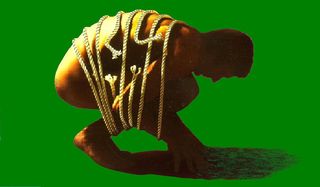
Chronic Pain
Pain, Brains, and Feeling Your Clothes
Understanding the complex nature of chronic pain.
Posted September 30, 2019
“I had back pain and I lost my job. Then, I lost my wife. But I still have the pain”—Anonymous chronic back pain patient to doctor.
It’s the last day of national pain awareness month, and pain is still hard to understand. We all suffer from pain, it is costly, with back pain alone taking up 10% of the healthcare budget in most developed countries, and can be dangerous to treat (sometimes leading to dependence). In fact, not everyone suffers from pain. Those with a rare disease called congenital insensitivity to pain, or CIP don’t feel pain. Because pain is a protective mechanism (which teaches us, for example, to keep our fingers away from fire), people with CIP don’t learn to protect themselves and often don’t make it past childhood.
A reason chronic pain is hard to understand is that it is complicated. To demonstrate how complex it is, pay attention to the feeling of your clothes touching your body. You can feel them, can’t you? The funny thing is that before I asked you to pay attention to it, chances are you didn’t feel anything. The clothes were still there, and the feeling was there, but the feelings were white noise that your brain basically ignored. Something similar happens with chronic pain: sometimes there is no reason for you to feel pain, but your brain makes you ultra-aware of sensations that get interpreted as pain.

Take the following example. James hurt his back 3 years ago when doing deadlifts in the gym. Now, in addition to the pain, James has a deep fear of back pain and is anxious about episodes of particularly bad back pain. When he gets an episode of particularly bad pain, he immediately stops what he is doing, and lies down to take some painkilling tablets. Episodes are often triggered when he does anything similar to a deadlift, like bending over to pick something up. To avoid this ‘pain’, James avoids many activities and sports that he used to enjoy. The lack of activity makes him grumpy, melancholic, and even more anxious.
...his brain has been trained to become hyper aware of any sensations in his back area...
The problem is that the feelings James experiences as pain almost certainly aren't physical injuries. Instead, his brain has been trained to become hyper-aware of any sensations in his back area (the way you felt your clothing when I asked you to). The slight and harmless sensations that are treated by healthy individuals as ‘noise’ prompt James' brain to mistakenly infer that an injury is the cause of these sensations, and interprets the harmless situations as pain so that he can protect himself. James' brain has been trained to be too sensitive to ‘white noise’ sensations in James’ back.
The inevitable anxiety, fear, and threat perception, emotional states that often accompany chronic pain, have the effect of worsening symptoms by maintaining vigilance to predicted pain.
Some researchers hypothesize that the brain will actually generate sensations around the area that was previously injured. For example, it might tighten the back muscles, which intensifies sensations in the area (try it to see). Why would the brain do this? After all, it is a natural reaction to “tighten up” when we are scared, and people with chronic pain do live in fear of another severe episode.
This way of seeing chronic back pain has implications for what we can do about it. (As always, don’t do anything without consulting a qualified professional medical practitioner.) In a word, it involves moving beyond pharmaceutical drugs as the main “go-to” option for chronic pain. The drugs might dull the sensations, and they have a role. But most commonly used over the counter drugs have side effects for some people, and they barely outperform placebos for back pain, cancer pain, and many chronic conditions. The second thing is to move. Instead of stopping physical activity, do it. Safe physical activity reduces rather than exacerbates chronic back pain. Safe activity that generates reduced pain may retrain the brain the right way. Third, cognitive behavioral therapy and mindfulness can help us stop interpreting harmless sensations (like the feeling of your shirt on your back) as pain.
References
Tanja Hechler, Dominik Endres, and Anna Thorwart. Why Harmless Sensations Might Hurt in Individuals with Chronic Pain: About Heightened Prediction and Perception of Pain in the Mind. Front Psychol. 2016; 7: 1638.
Ungaro G, Kaptchuk TJ. Symptom perception, placebo effects, and the Bayesian brain. Pain. 2019 Jan; 160(1): 1–4. Published online 2018 Dec 28. doi: 10.1097/j.pain.0000000000001367.

